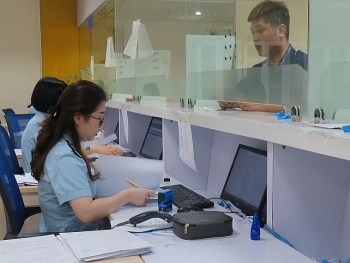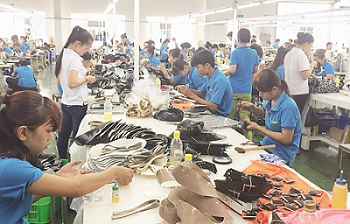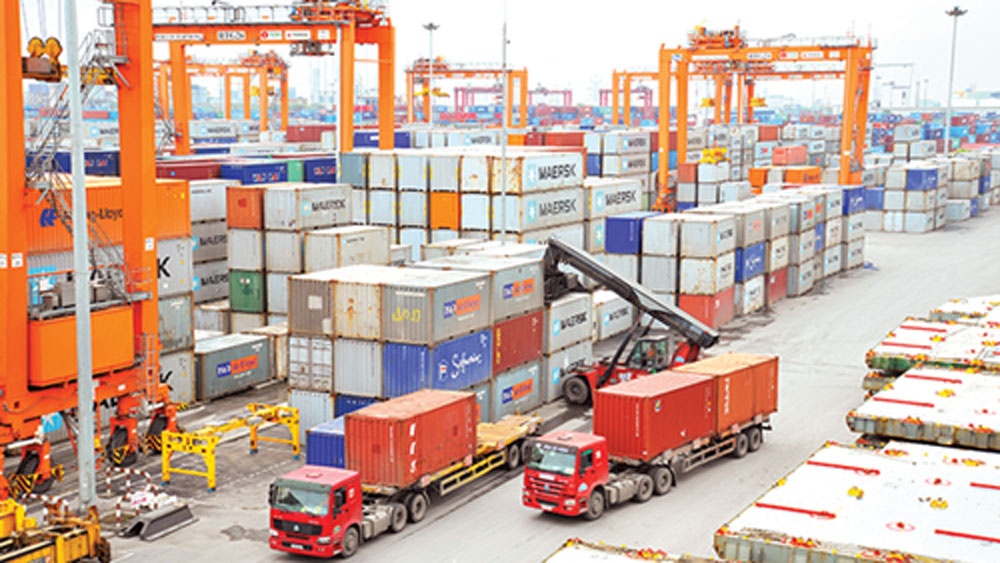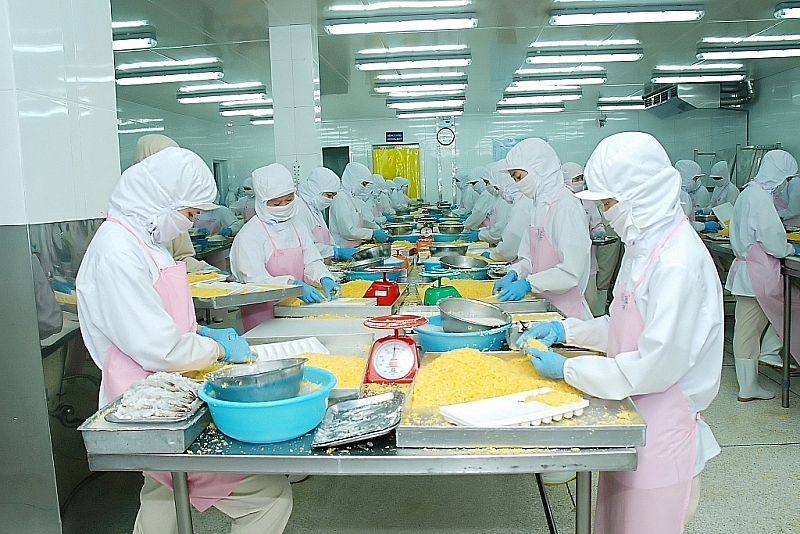Many Vietnamese enterprises are unable to export goods
| |
| Exported goods of enterprises are affected by Covid-19. Photo: T.H |
A survey on the impact of the Covid-19 pandemic on the production and business activities of enterprises in Ho Chi Minh City announced by the Ho Chi Minh City Statistical Office on May 30th shows that 85% of enterprises are affected, of which many enterprises cannot export goods.
Nearly 40% of enterprises could not export goods
According to the survey on 16,300 enterprises (accounting for nearly 12% of the total number of actual businesses in operation), up to 85.47% of enterprises said that they were affected by the Covid-19 pandemic. There are 12 districts where the rate of enterprises affected by Covid-19 pandemic was higher than the average of 85.47%.
In particular, the bigger the business is, the more impact it will suffer due to the influence of the supply chain of production materials.
During the Covid-19 pandemic period, enterprises faced many difficulties, such as: the consumer market was narrowed, the demand for raw materials was interrupted, input costs increased. 49.45% of enterprises affected by the Covid-19 pandemic thought that the domestic market was narrowed; 15.32% said that goods could not be sold domestically and up to 42.41% of enterprises could not conduct production and business activities.
Notably, among enterprises with export activities, up to 38.21% of enterprises said that their goods cannot be exported due to social distancing, job losses, income decline in the traditional export markets (the US, China, the EU, Japan) that makes demand decrease.
In particular, state-owned enterprises and foreign-invested enterprises are most affected by export markets, as 50.56% of State-owned enterprises and 48.45% of foreign-invested enterprises are unable to export goods.
In the field of exporting food products, 48% of enterprises are unable to export goods; the rate of chemical product manufacturing industry is 44.83%; manufacturing medicine and pharmaceuticals is 52.38%; rubber industry is 46.03%; metal industryis 43.33%; electronic product manufacturing industry is 46.67%; textile industry is 55.88%; garment industry is 63.45%; leather and leather products industry is 56.62%.
Up to 25.58% of businesses cannot recruit or must cut labor to maintain production. The larger the enterprise is, the harder it is to solve the problem of finding labor resources. Specifically, 23.26% of micro enterprises face difficulties in recruiting. This ratio in small enterprises is 33.45%, in medium enterprises is 35.8% and in large enterprises is 35.88%.
Due to the impact of supply and demand, businesses suffered losses and suspended operations. The survey showed that, among businesses that were negatively affected by Covid-19, 19.94% of enterprises temporarily suspended operations.
Besides, difficulties in production lead to reduced labor demand of businesses, affecting the labor market. The survey shows that by the end of the first quarter of 2020, up to 29.52% of employees lost their jobs.
Change to recover
In such a difficult situation, the survey shows that many businesses have solutions to maintain production and business in the direction of exploiting the domestic market, taking advantage of foreign markets and e-commerce.
In addition to training to improve skills for workers (accounting for 41.65% of the enterprise's choice), many businesses have had to implement temporary measures such as reducing labor, unpaid leave, allowing workers to take time off to work alternately, reducing labor wages and production scale or suspend operations.
Up to 66.8% of businesses affected by Covid-19 had to apply labor-related solutions. Solutions for unpaid vacation were selected by 39.5% of enterprises, the highest among labor solutions.
The most laid-off is state enterprises and non-state enterpriseswith the rate of18.91% and 15.92%, respectively; FDI enterprises had the lowest rate of 11.24%.
Regarding business orientation of the Covid-19 period, the best choice of businesses was to cut regular operating expenses, with 38.56%; followed by finding markets to consume products outside the traditional markets, with 14.8%. Finding new markets for input materials were also selected by 8.29% of enterprises; changing key products and promoting e-commerce are the two solutions that many enterprises choose with the rate of 5.34% and 5.1%, respectively.
Especially, not only applied to deal with the current situation, e-commerce is considered an indispensable trend in the operation of businesses in the future.
 | Vietnam developing policies to manage import-export goods via booming e-commerce Individuals and organizations participating in e-commerce for import and export goods will carry out customs procedures actively and effectively. |
 | Vietnam Customs: Warning the sign of violating regulations on importing goods The General Department of Vietnam Customs sent a document to provincial Customs Departments warning them over signs of violating regulation on importing goods with conditions. |
 | Vietnam's footwear exports to U.S. market increase by 10% in Q1 Vietnam’s footwear and bag export value is forecast to reach 24 billion USD this year, maintaining a 2-digit increase. Footwear is one of the key ... |
 | Fresh regulations for temporary import and re-export goods in Vietnam The Ministry of Industry and Trade issued Circular 09/2020/TT-BCT stipulating the roadmap for applying import – export border gate for temporary import and re-export goods, ... |
Recommended
 Economy
Economy

